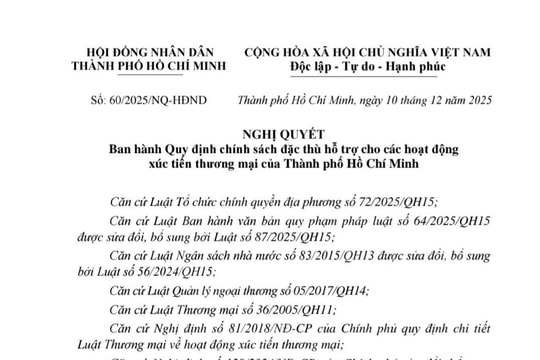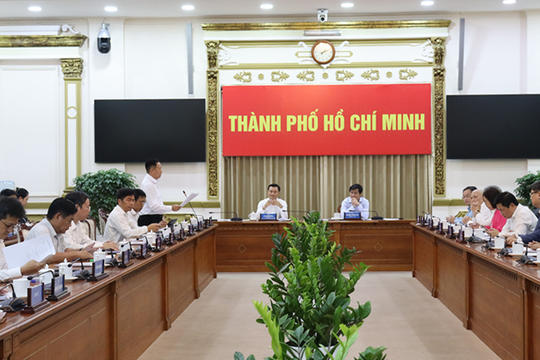When the U.S. Becomes a Trade Risk
For a long time, the U.S. has been the largest export market for Vietnam’s footwear industry. According to the Vietnam Leather, Footwear and Handbag Association (LEFASO), in 2024 alone, footwear exports to this market reached nearly USD 10 billion, accounting for about 32% of the industry's total export value. This has made the U.S. a key destination for most major enterprises in the industry.
However, that position is gradually becoming a risk. The Trump administration’s reintroduction of reciprocal import tariffs—imposing duties equivalent to those levied by other countries on U.S. goods—could put Vietnamese footwear in the crosshairs. Currently, Vietnam applies MFN (Most Favoured Nation) tariffs of 10–20% on some U.S. footwear imports, making it likely that equivalent duties could be imposed by the U.S.

Moreover, the U.S. is intensifying its scrutiny of origin, labor quality, and environmental emissions—emerging requirements in the global supply chain. Risks of anti-circumvention or countervailing duties are real, as the U.S. trade deficit with Vietnam has now exceeded USD 120 billion in the past year.
“An export ratio to the U.S. that is too high makes businesses vulnerable to any policy changes. This isn’t a good sign—it’s a warning.”
— Mr. Nguyen Duc Thuan, Chairman of LEFASO
Alarming Dependence and the Need to Pivot
It’s undeniable that the surge in exports to the U.S. in recent years has significantly boosted Vietnam’s footwear growth. But growth does not equate to safety—especially when a key market becomes a bottleneck.
According to the Ministry of Industry and Trade, around 85% of Vietnamese footwear companies regularly receive orders from the U.S., more than half of which operate under OEM models—producing according to customer specifications without owning their own brand or distribution channels.

This means even a small change in U.S. import rules, shipping costs, or tariffs could seriously disrupt the order chain and put businesses on the defensive.
The reality of 2023–2024 illustrates this well. As logistics costs surged and delivery times lengthened, many U.S. customers canceled orders or demanded deep discounts. Major firms like An Phuoc and Dong Hung had to swiftly search for alternative markets to maintain production momentum.
Many economists argue that over-reliance on a single market makes businesses vulnerable—especially in a global trade landscape riddled with geopolitical risks. A strategy of market diversification is not optional but essential for sustainable development.
Market Diversification: The Window is Open, But Not Forever
The global market is undergoing a dramatic transformation. The rising middle class in the Middle East, India, Africa, and Latin America is driving up demand. Vietnam's participation in free trade agreements such as CPTPP, EVFTA, UKVFTA, and RCEP opens the door to promising markets—with preferential tariffs, even as low as 0%.
Reports from the WTO Center – VCCI show that Vietnamese footwear exports to the EU currently benefit from a 0–3% tariff, depending on rules of origin. Meanwhile, Japan, South Korea, and Australia are seeing growing demand for high-quality, eco-friendly footwear—offering great opportunities for Vietnamese firms that meet green and transparent supply chain standards.

For example, TBS Group has seen 20% growth in exports in 2024, despite a decline in U.S. orders, by expanding its own brand in Japan and South Korea. Gia Dinh Footwear Company has successfully exported to the UAE, Mexico, and South Africa with customized product lines tailored to regional cultures.
However, diversification is not just about finding new customers—it must be a long-term strategy: revamping product design, distribution channels, cost structure, and even brand development mindset.
“Market diversification isn’t about putting eggs in different baskets—it’s about learning how to master your own basket.”
When the U.S.—Your Biggest Market—Becomes a Risk
When the U.S.—Vietnam’s largest export market is no longer a safe harbor but a looming risk, there’s no choice but to diversify. This isn’t just a reactive measure—it’s a survival strategy for Vietnam’s footwear industry.
So if the question is, “Export diversification—now or when?”
The answer is clear: now, while the global market is still open, while Vietnam still holds FTA advantages, and while businesses still have time to adapt. Wait a few more years, and these opportunities may no longer be within reach.




.jpg)

.jpg)

.png)
.png)
.png)


.png)
.png)






.png)

